Going green just got easier with Geneco’s newly launched sustainable energy solutions – Which one should you choose?

Advocating for a more sustainable lifestyle for our customers has always been at the core of Geneco. Beyond our position as a leading electricity retailer in Singapore, we believe that we have the responsibility to do good for our future generations and to protect the environment.
In celebration of Geneco’s 3rd anniversary and Earth Day 2021, we recently held our inaugural Plant-A-Tree event at Windsor Nature Park as part of our commitment to National Parks Board’s #OneMillionTreesSG movement. Presiding over the event was our newly appointed Chief Executive Officer of Geneco – Mr Lim Han Kwang, alongside our ChangeMakers partners – The Food Bank Singapore, Comcrop, Cultivate Central, Refash, Repair Kopitiam and Green Nudge, and Standard Chartered Bank partner. Sharing the same vision of creating a better and cleaner tomorrow for the future generations, these like-minded organisations took time out for this event to do their part for an environmental cause.
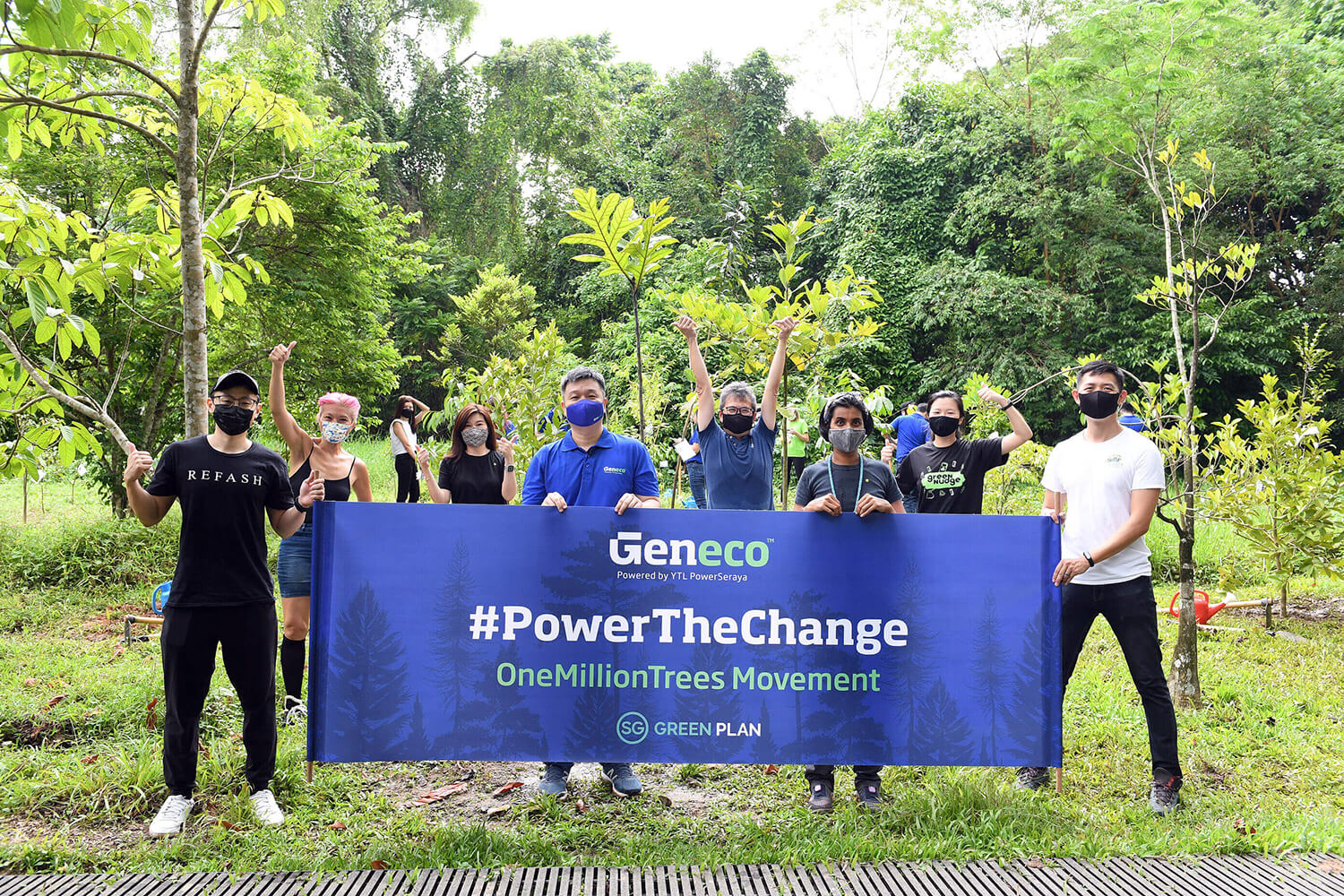
Planting the first 50 of the 250 trees we have pledged for the next 5 years, this commitment also aligns our support for the nation’s SG Green Plan, as well as the continuous efforts to #PowerTheChange for a more sustainable and greener nation.
In his opening speech at the event to mark this special occasion on Earth Day 2021, Mr Lim also announced Geneco’s new comprehensive suite of sustainable energy solutions to ease and encourage customers to adopt an eco-friendlier lifestyle.
If you are kickstarting your eco journey and are overwhelmed by the multiple green energy options out there, here is a guide on our newly launched sustainable energy solutions for your home to consider.
Power Eco Total Home Solution
Customised renewable energy solution (solar panel installation with optional green electricity plan)
The Geneco Power Eco Total Home Solution provides solar panels installation for landed residential homes with optional add-on of any of our green electricity plans.
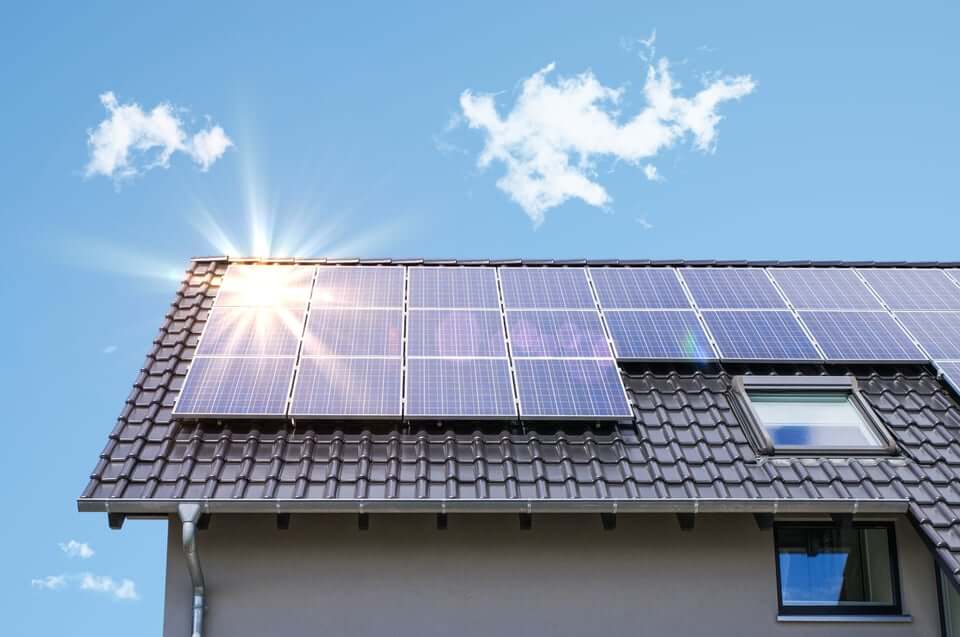
Available to both existing and non-existing Geneco customers, the solar panel installation service provides customers the opportunity to do good for the earth by adopting a 100% carbon neutral lifestyle, and also reduces up to 9,300 kg of carbon dioxide, which is equivalent to the annual CO2 absorption by 462 rain trees. Excess energy produced can also be sold back to the grid.
The benefits from this installation go a long way where households get to enjoy lower electricity cost, saving up to $4,600 on your electricity bills each year. What’s more, households even get to enjoy additional savings with up to $1,000 Geneco of bill rebates!
To ease the set-up cost of the solar panels’ installation, Geneco has partnered with Standard Chartered Bank to bring customers an exclusive promotion of up to $1,250 cashback with the approval for CashOne personal loan.
Power Eco Total Home Solution
- Offset up to 9,300kg of greenhouse gases
- Save up to $4,600 a year on electricity bills
- Enjoy up to $1,000 Geneco Bill Rebates
- Get up to $1,250 Cashback for Standard Chartered Bank CashOne personal loan
Complete your Power Eco Total Home Solution with any of the following green electricity plans below to go 100% eco-friendly.
If you are unable to install solar panels for your household, you can still do your part to offset your carbon footprint by signing up for a standalone eco plan for your residence. Furthermore, for a limited time only, Standard Chartered Bank credit card holders get to enjoy additional $35 bill rebate on top of prevailing promotions for new sign-ups with Geneco’s green plans when they set up recurring bill payment.
Get Sunny
100% solar energy plan
Solar energy has been touted as a key pillar in Singapore’s energy future with it gaining traction progressively. The ability of solar energy to reduce harm on the environment and the long-term benefits to our climate has garnered the attention of many consumers and organisations.

With Geneco’s Get Sunny electricity plan, it is a 100% renewable energy option that will be powered from Geneco’s parent company YTL PowerSeraya’s own solar photovoltaic (PV) system. This makes choosing a renewable energy plan a reality for residential households who would like to make the full commitment by choosing renewable energy but may not have the necessary infrastructure or resource to make it a reality.
If you are thinking of switching to a renewable solar energy plan, consider Geneco’s Get Sunny – where you will also receive a Renewable Energy Certificate, to pave positive impacts for the environment and #PowerTheChange.
Get It Green
100% carbon-neutral electricity plan
The definition of carbon-neutral electricity is to offset the amount of electricity generated from a person’s carbon footprint. This is executed through carbon credits which allows you to pay to reduce the carbon emissions that you have generated. Funds generated from the purchased credits are channelled to certified climate action projects. These projects reduce, remove or avoid greenhouse gas emissions and are a great way for any businesses, households or individuals to make a choice and help organisation to take immediate action.
Geneco’s Get It Green is a 100% carbon-neutral electricity plan that lets you do good for the earth even while consuming electricity at home for your daily needs. You will also receive Verified Carbon Units Certificate for making a simple yet conscious choice to offset your carbon footprints.
Here at Geneco, we understand that starting your eco journey might seem daunting, which is why we have launched this comprehensive suite of sustainable energy solutions to ease and encourage you to adopt a greener lifestyle.
The SG Green Plan 2030 has outlined the transformation we can expect for Singapore within the next decade as the nation furthers its green ambitions for a more sustainable future. With every kilowatt of energy consumed, make your usage count and #PowerTheChange with us today to secure a better environment for the future generations.
References:
- Elangovan, N. (2020, June 5) Singapore households generated additional 1,334 tonnes of plastic waste during circuit breaker: Study, Today Online.
https://www.todayonline.com/singapore/singapore-households-generated-additional-1334-tonnes-plastic-waste-during-circuit-breaker
Image Credits: Nylon Coffee Roasters
Source: The Sustainability Project
Carbon Neutral Electricity Explained

A brief introduction to carbon emissions
Since the Industrial Revolution, sources of carbon emissions have increased. Human activities have led to a sharp and dangerous increase in these emissions, mainly through fossil fuel combustion in the electricity and heat, transportation and industrial (consisting of manufacturing, construction, mining and agriculture) sectors.
Carbon emissions make up 97% of Singapore’s greenhouse gas emissions. These emissions cause more heat to be trapped in the atmosphere, leading to climate change. This interesting video created by researcher Antti Lipponen, from the Finnish Meteorological Institute, used publicly available data from NASA to demonstrate the rising temperatures, or global warming, across the world.
These are some of the few repercussions of global warming:
- Widespread melting of snow and ice around the world
- Rise in global sea levels
- Ocean acidification
- Coral bleaching
- Increased flooding
- Longer droughts
- More frequent cold waves and heat waves
- Stronger storms, cyclones and hurricanes
These effects, in turn, lead to a decrease in crop yield, famine, loss and extinction of flora and fauna on land and under the sea, threatened water supplies, rise in water, food and insect borne diseases, and many other issues.
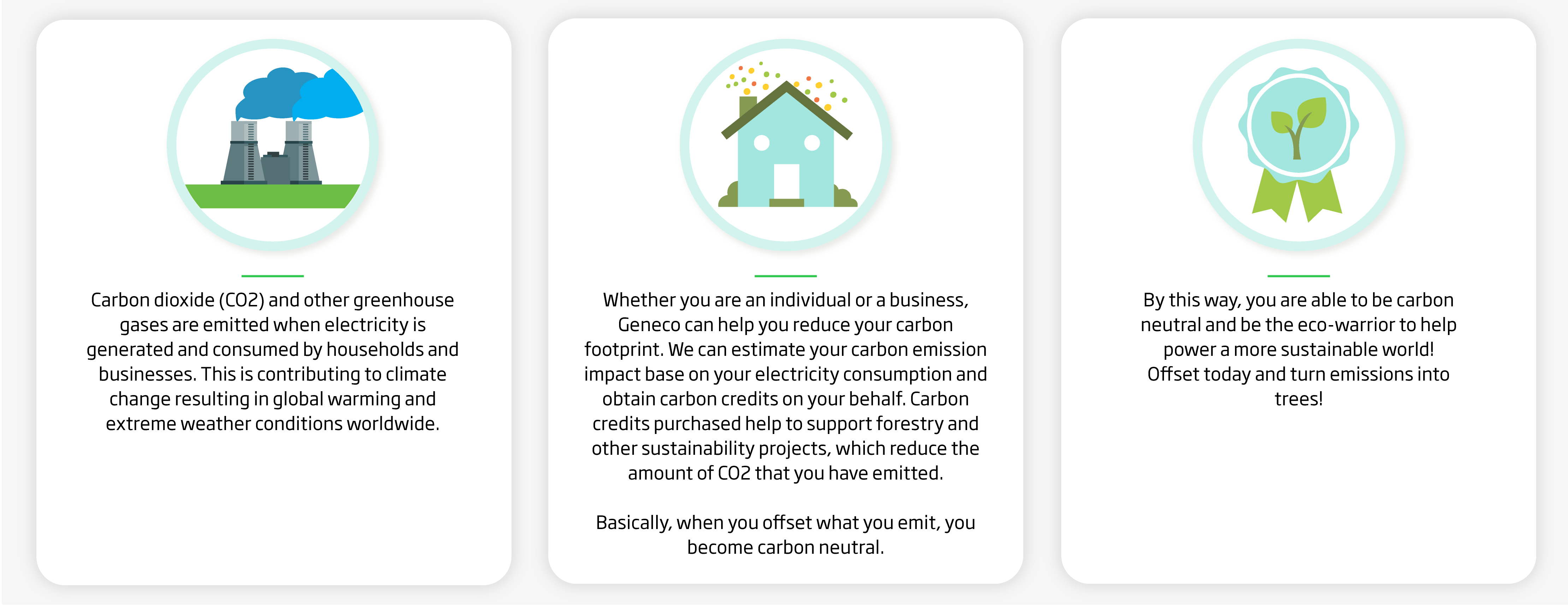

What is Singapore doing to help?
Singapore experiences the effects of climate change along with the rest of the world. The buildup of carbon dioxide in the atmosphere makes our weather hotter and raises the sea level around us too.
Reducing our carbon emissions is one important way of limiting the effects of climate change in the coming decades. As a responsible member of the global community, Singapore has pledged to reduce our greenhouse gas emissions by 16% below Business-As-Usual levels in 2020. The pledge, announced in 2010 ahead of the UNFCCC Climate Change Conference in Copenhagen, was conditional on a legally binding global agreement. Singapore has also ratified the UN Framework Convention on Climate Change in 1997, acceded to the Kyoto Protocol in 2006 and to the Paris Agreement in 2015.
Within Singapore, energy consumption is one of the main sources of carbon emissions. Our household appliances, transport systems, industrial and commercial activities all run on electricity and fuel.
Over the years, Singapore has switched to being less reliant on carbon-intensive fuel oil, using more natural gas instead. This means that Singapore can continue to be powered, while emitting less carbon. However, there are limits to how much further we can reduce emissions, since natural gas already constitutes more than 95% of our fuel mix for electricity generation today. Therefore, improving energy efficiency is key in our efforts to reduce emissions.
How are carbon emissions linked to my use of electricity?
Conventional electricity is generated through the burning of fossil fuels and this process results in the release of carbon dioxide equivalent (CO2e) gases into the atmosphere. By using electricity, consumers indirectly contribute to these emissions.
How much carbon does a typical household indirectly emit from the use of purchased electricity?
Based on an average Singapore household consumption of 450 kWh of electricity per month, around 2.2 metric tonnes of carbon dioxide equivalent gases are estimated, per household, to be emitted to the atmosphere in a year.
How can I reduce my carbon footprint?
In order to reduce your carbon footprint, you first need to understand the extent of your carbon footprint. You can learn more about your estimated carbon footprint using a simple online calculator.
You can reduce your carbon footprint by making conscious and mindful decisions about your lifestyle. This would result in lower energy use, lower emissions and a better world for future generations.
Here are four ways to get you started:
Image Credits: Nylon Coffee Roasters
Source: The Sustainability Project
References:
- 1 (2019) Climate Healers, Animal Agriculture is the Leading Cause of Climate Change – A Position Paper https://climatehealers.org/the-science/animal-agriculture-position-paper/

1. At Home
Minimise your household carbon emissions by using energy, water and other resources carefully. Adopt some green ways to reduce your household energy usage.

2. Transportation
Take public transport instead of driving. If your destination is nearby, walk or cycle.
If you have to drive, choose a car that emits less carbon. Look out for the mandatory Fuel Economy Labelling Scheme (FELS) labels. These will tell you more about the amount of carbon emitted and fuel efficiency performance of the car model. With the enhanced Vehicle Emissions Scheme (VES) effective from 1 January 2021, you will also get to enjoy a rebate when you buy a vehicle that emits less carbon.

3. Reduce, reuse and recycle
By choosing to use less, less will go to waste. When we do throw things away, we can make sure our waste gets reused by recycling materials such as paper, metal, plastic and glass.
Using recycled products can also help reduce carbon emissions, because it takes less energy to produce them.
Avoid using disposable utensils, cups and plastic bags whenever possible. Reduce waste by bringing your own utensils for meals and using your own reusable bag for grocery shopping. Also, consider whether you really need the packaging or wrapping when you buy things.
Watch this 71-year-old grandmother take on the 7-day zero-waste and plastic-free challenge.

4. Utilise carbon credits
Carbon credits are completely voluntary. Individuals and businesses can purchase carbon credits to balance out their carbon footprint.
In a nutshell, carbon credits let you pay to avoid/reduce the carbon emissions, instead of making radical or impossible reductions of your own.
When you buy credits, you fund projects that reduce carbon or greenhouse gas emissions. Some examples of these projects include renewable energy projects, updating power plants and factories, or increasing the energy efficiency of buildings and transportation.
What are carbon credits?
Carbon credits (or carbon offset) are credits given for greenhouse emissions reduced or removed from the atmosphere by an emission reduction project, and which can be used by governments, industry or private individuals to compensate for the emissions they are directly and/or indirectly generating.
How do carbon credits work?
While there are different types of carbon credits available in the market, they all work in similar manner. One of the most widely issued carbon credits are the Verified Carbon Units (VCUs) issues to projects developed under the Verified Carbon Standard (VCS) Program.
Through the VCS Program, more than 1,300 certified VCS projects have collectively reduced or removed over 200 million tonnes of carbon and other GHG emissions from the atmosphere.
Projects developed under the VCS Program must follow a rigorous assessment process in order to be certified and include a wide variety of technologies and measures which result in GHG emission reductions and removals. These projects are categorized by their sectoral scope, which range from renewable energy projects to land use projects.
All VCS projects are subject to desk and field audits to ensure that standards are met and methodologies are properly applied. Projects are assessed using a technically sound GHG emission reduction quantification methodology specific to that project type.
Once projects have been certified, project developers are issued VCUs, with one VCU representing one metric tonne of carbon-equivalent emissions reduced or removed from the atmosphere.
Purchasing and retiring these VCUs allow individuals and companies to offset their own emissions. Carbon neutrality is achieved when emissions are fully offset.
Parties interested in purchasing and retiring these VCUs, use the trusted and secure platform, the Verra Registry, which was launched in April 2020 and is the cornerstone for the implementation of VCS standards and programs. Geneco is one such party, and strive to provide our customers with carbon credits of similar or even higher standard of assessment and quality assurance.
How does Geneco support the reduction of carbon emissions?
In the UK, Geneco is acclaimed for its work in recycling and renewable energy. Landfills of junk and waste are used to power homes, buses, cars and more. We have won 13 awards for our green efforts, including National Recycling Awards for both 2015 and 2016, British Renewable Energy Awards for both 2015 and 2017, and many more.
Geneco brings this same expertise to the Singapore Open Electricity Market, giving consumers a choice to build a sustainable energy future through the purchase of a carbon neutral electricity price plan.
Start your sustainable journey today by customising your green add-on for your electricity plan with Geneco’s Power Eco Add-on (Carbon Credits).
How to be a successful plant parent

House plants are a great addition to any home – and they come with many benefits ranging from improving the air quality of your room to being a mood booster and even improving your wellbeing. A pot of monstera or a spider plant would make a great décor piece, breathing life into the corners within any home with their perky green leaves.
Despite these benefits, many might think they do not have a green thumb and would still choose to go without having any plants at home. Don’t be discouraged if you had a bad experience at your first attempt of growing a house plant. To help you on your journey to be a successful plant parent without the unnecessary struggle, here are some tips to help you succeed the smart way, not the hard way.
1. How many golden hours do you get?
Before anything else, draw your curtains wide open and figure out exactly how many hours of sunlight your room of choice normally gets as this is crucial in deciding what type of house plant to buy. Some plants can survive on less than two hours of sunlight a day, while some need up to eight hours of light.
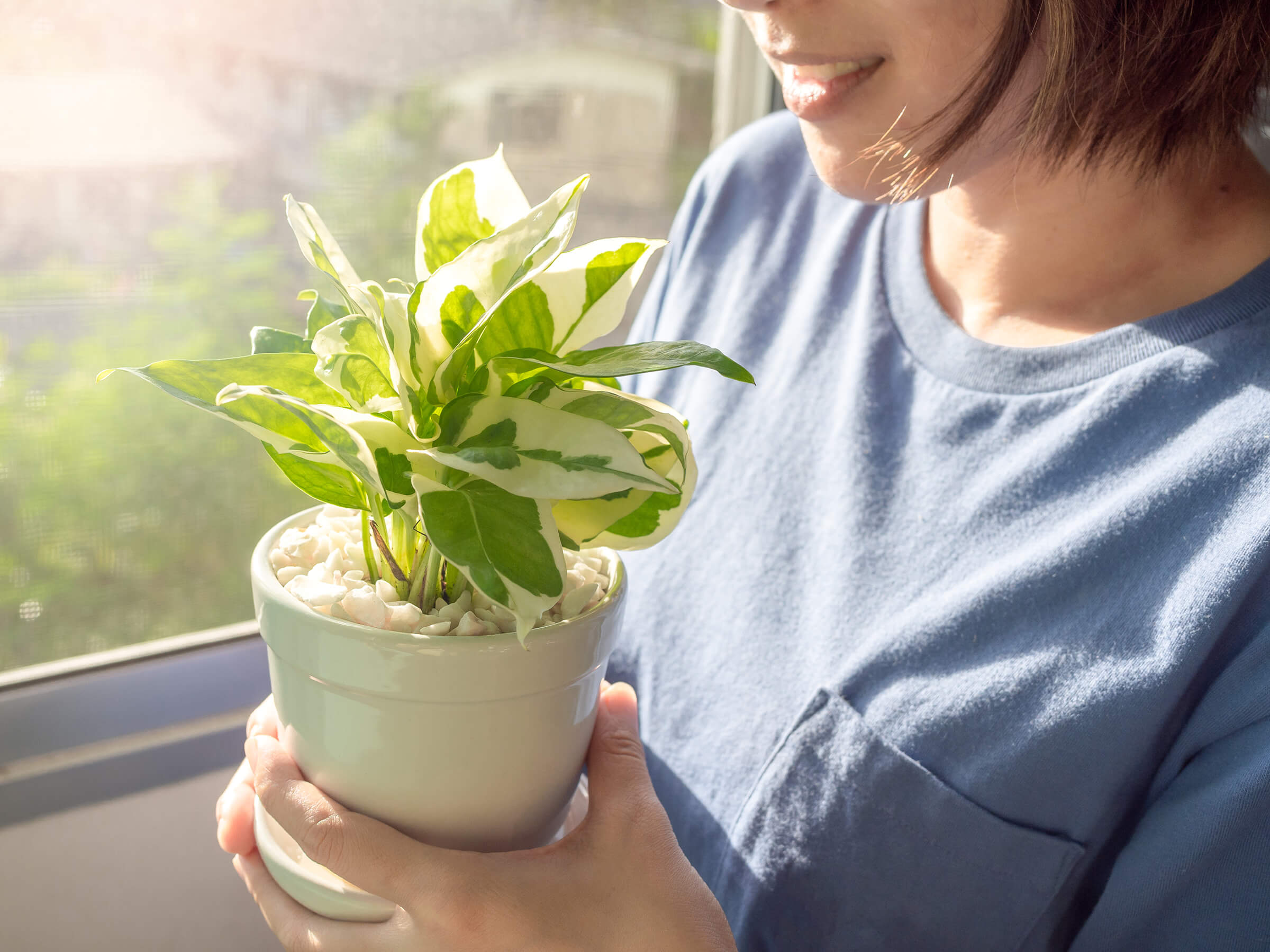
If you spot some brown ends on the leaf of a plant, that could be a sign of scorching, which happens when there is too much sunlight and not enough water. The direction of your window would also give you an indication of how many hours of sunlight you will be getting and how strong the sunlight would be. In the same way we all have different preferences, your plants and your environment would have to be a great fit for each other so that it can thrive in your home.
2. The watering trick they don’t tell you about
Too much of a good thing can be bad, and the same goes for watering your plants. It is a common misconception that all plants need as much water as they can get. Each species of plants has their own watering needs, and many plant-health related issues start from overwatering.
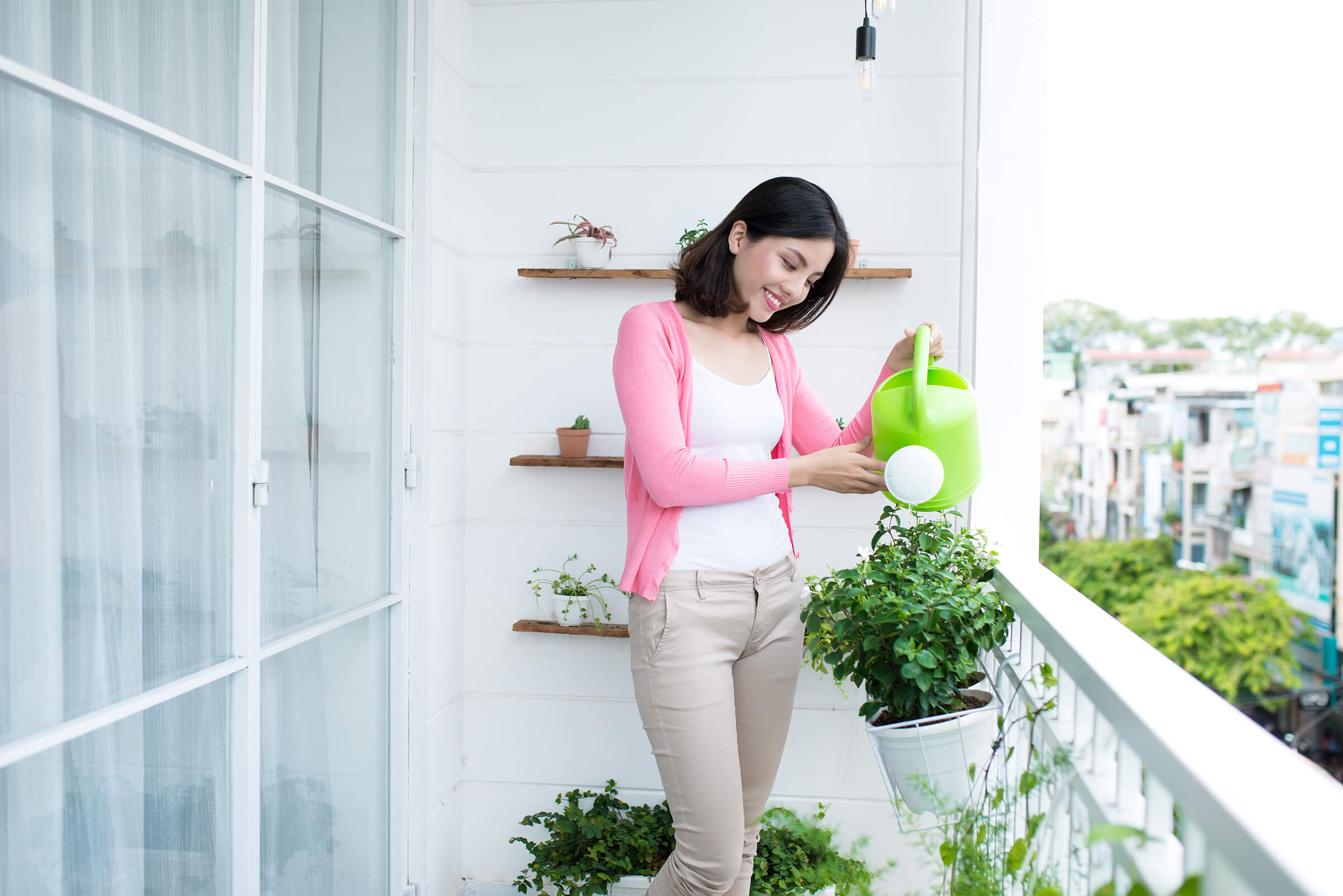
Not well known to most people, the term ‘overwatering’ does not refer to the quantity of water. In fact, it is important to water the plant to the point of saturating the soil. ‘Overwatering’ actually refers to watering too many times, and depending on the plant, the appropriate number of times can range from once a day to once a month. With the right plant, you can enjoy bright green leaves while watering at a frequency that suits you.
3. Keeping away the pesky pests and other plant health problems
The health of your house plants can be severely impacted by house pests and fungi, which could be using your plant as a home, or source of food and nutrients. There are many different types of these pesky little fellas, but luckily, there are simple ways to prevent infestation:
- Isolate new plants from the rest for at least a month before putting them together. In this time, check the new plant to see if there are any bugs
- Wipe down a planter whenever you re-pot a plant
- Remove dead leaves and foliage
- Wipe your plants down occasionally with a soft cloth and lukewarm, non-toxic soap water
- Make use of a common household product to create your own natural fungicide (we found baking soda to work wonders for our plants)
Selecting your first house plants
We know the above may sound daunting and like a lot of work, but once you get the hang of it, you will be rewarded with healthy and happy plants that will brighten your home and improve your mood. To get you started, here is a list of low maintenance plants that you can consider having at home.
- Snake plant
Snake plants are a fan favourite, because of how low maintenance they are. They require very little watering, and they do well in most conditions. Their strong green leaves feature interesting snake-like patterns, which makes every plant different from the next. Talk about a unique indoor plant! They are resistant to most pest problems, and research has shown that they have air purifying effects as well. If you are looking for a beginner plant that is beginner-friendly and easy to maintain, look no further than to explore having a snake plant as part of your starting collection.

- Spider plant
The plant got its name from the way the little plants dangles, much like a spider web. Raising a pot of spider plant can be very gratifying, because they grow quickly and very easily. They also purify your air and remove harmful chemicals. Don’t worry about the brown tips either, it’s completely normal and is caused by the salt build up in the soil. - Monstera
You might have seen this guy in many interior design magazines because of its interesting appearance. With the holes in its leaves, it is no wonder that its nickname is “Swiss cheese plant”. It would turn any living area into an oasis, sitting beside your couch while you chill and relax on the weekend, giving you the tropical hotel experience right from your living room.

As we incorporate house plants into our homes and enjoy the benefits it brings to our lives, let us not forget the importance of trees and how they serve as the lungs to the earth. Not only do they help combat climate change by reducing carbon emissions, but they also form the life-support system of many wildlife species.
In celebration of our 3rd Anniversary, and as part of commitment to the nation’s #SGGreenPlan, Geneco is joining the #OneMillionTreesSG movement by planting 250 trees over the next 5 years. Be a part of this movement with us by joining in our giveaway in the post below and stand a chance to win a special eco-friendly lifestyle set, comprising of a tote bag, reusable water bottle, lunch box, cutlery set and win $30 Dairy Farm vouchers.
Together, let’s #PowerTheChange!
Image Credits: Nylon Coffee Roasters
Source: The Sustainability Project
References:
- 1 (2019) Climate Healers, Animal Agriculture is the Leading Cause of Climate Change – A Position Paper https://climatehealers.org/the-science/animal-agriculture-position-paper/
